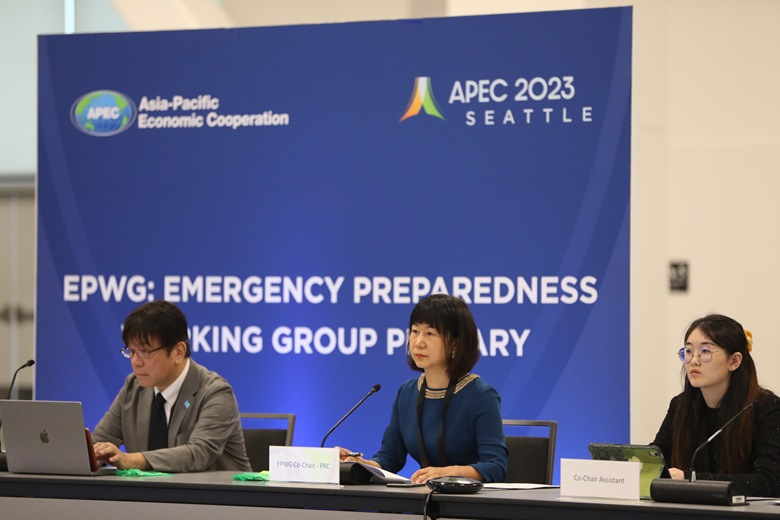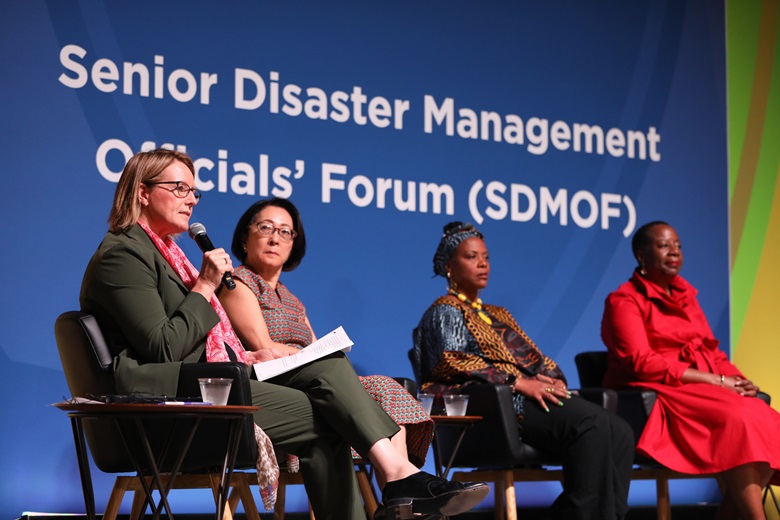Most APEC economies are situated along the Pacific Ring of Fire, where strong earthquakes, tsunamis, and volcanic eruptions pose constant threats. The region is also the world’s most frequented by tropical cyclone formations, including yearly occurrences of Category 5 cyclones, or super typhoons. Furthermore, the Asia-Pacific region is subjected to temperature changes in the Pacific Ocean, resulting in the El Niño and La Niña phenomena. All these conditions could be further exacerbated by climate change.
Catastrophes in the region—such as the 2004 Indian Ocean Tsunami, the 2008 earthquake in China's Sichuan Province, the 2010 earthquake in Chile, and the 2011 earthquakes in New Zealand and Japan—are critical reminders of the importance of APEC's emergency preparedness work.
The APEC Emergency Preparedness Working Group (EPWG) was first established as the APEC Task Force for Emergency Preparedness (TFEP) by APEC Senior Officials in 2005. In 2009, APEC Leaders reaffirmed the importance of enhancing human security and reducing the threat of disruptions to business and trade in the Asia-Pacific Region. In 2010 the TFEP—the importance of its work recognized—was elevated to an Emergency Preparedness Working Group (EPWG).
The EPWG seeks to build capacity in the region so that APEC member economies can better mitigate, prepare for, respond to, and recover from emergencies and natural disasters. This is achieved by building business and community resilience; fostering private-public partnerships to protect communities and businesses from disruption; and by sharing information, knowledge and technology to improve regional capacity on disaster risk reduction.
The EPWG continues to improve coordination efforts within APEC, by fostering research and collaboration, sharing knowledge, lessons learned and best practices in the field of emergency management. The group enhances cooperation among members, and seeks integration of best-practice emergency and natural disaster preparedness.
In 2015, APEC Leaders adopted the APEC Disaster Reduction Risk Framework (DRRF), primarily to address the pressing concerns resulting from the persistence of disasters in the Asia-Pacific region, which are considered to be the “new normal.”
This “new normal” is characterized by at least two phenomena: the increasing frequency, magnitude and scope of natural disasters, and the resultant disruption of the increasingly integrated and interlinked production and supply chains of the region. It disrupts the free flow of trade and investment across economies; it presents tremendous challenges and serious threats to the inclusiveness and sustainability of growth and development in the region. According to a World Bank estimate, APEC economies have been incurring disaster-related losses of over $100 billion every year for the last ten years.
In 2016, the EPWG was tasked to lead in the creation of the APEC DRR Action Plan (DRRAP), which is composed of the four pillars of disaster risk reduction, specific areas for collaboration, corresponding activities, the responsible partners, timelines for accomplishment, and indicators for evaluation.
Last page update: October 2023
Contacts
EPWG Co-chair
Project Director, Asian Disaster Reduction Center (ADRC), Japan
Email: [email protected]
EPWG Co-chair
National Disaster Reduction Center of the Ministry of Emergency Management of China (NDRCC)
Email: [email protected]
Program Director
Current Activities
EPWG Plenary Meeting (SOM3, August 2023):

The EPWG convenes once per annum. The 19th EPWG plenary meeting and related workshop were held in Seattle, Washington, USA, in August 2023 during the Third Senior Officials’ Meeting (SOM3).
Disaster management officials from 16 member economies joined panellists from IGOs, NGO, NPOs, academia, businesses and local communities to exchange their views and share best practices on topics that included early warning systems for all, supply chain logistics, data-driven risk assessments and crisis communications in emergency situations.
16th Senior Disaster Management Officials Forum (SOM3, August 2023)

The EPWG also organized APEC’s 16th Senior Disaster Management Officials Forum (SDMOF16) on 3 August 2023 during SOM3 in Seattle, chaired by Hon. Deanne Criswell, Administrator of the Federal Emergency Management Agency (FEMA) of the United States.
Corresponding ministers and high-level representatives from 16 APEC member economies joined the panellists from the United Nation Office for Disaster Risk Reduction, indigenous communities, academia and industries to share their views and policy recommendations. Key topics discussed included adaptive crisis management, inclusive and participatory disaster risk reduction (fostering whole community integration into decision-making processes), climate impacts to disaster housing (prioritizing pre-disaster recovery planning in Asia-Pacific), nature-based solutions (strengthening infrastructure resilience) and women’s leadership in crisis management (achieving an equitable future for the APEC region).
The Forum agreed and urged members to update the 2015 APEC Disaster Risk Reduction Framework and the 2016 Disaster Risk Reduction Action Plan.

